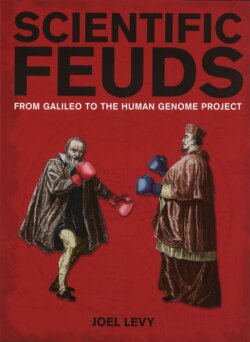Читать книгу Professional Hairstyling - Joel Levy - Страница 16
На сайте Литреса книга снята с продажи.
‘The grandest mill’
ОглавлениеDarwin may have been running scared, but his self-appointed bulldog, T.H. (Thomas Henry) Huxley (see pages 38–47), was ever ready to take up the gauntlet on his behalf. In his 1869 presidential address to the Geological Society of London, Huxley defended the views of the ‘old Earthers’ and pointed out the basic flaw in Kelvin’s approach: ‘Mathematics may be compared to a mill of exquisite workmanship, which grinds your stuff to any degree of fineness; but, nevertheless, what you get out depends on what you put in; and as the grandest mill in the world will not extract wheat flour from peas cods, so pages of formulae will not get a definite result out of loose data.’ In other words, Kelvin’s calculations might be unimpeachable, but if he had got his starting assumptions wrong then his conclusions would also be wrong.
The scientific world now began to gather behind the respective banners of Kelvin and Huxley. And although the physicist P.G. Tait used a new method to calculate that the Sun was around 20 million years old and the Earth only 10 million, in the tenth edition of his Principles of Geology, Lyell accepted that the age of the Earth was finite but dated the Cambrian era to around 240 million years ago. Although many scientists sought some middle ground, attempting to prove that evolutionary and geological processes might act relatively quickly, operating within Kelvin’s timescale, it was becoming increasingly obvious that both sides could not be correct; someone must be making basic errors.
The geophysicist Osmond Fisher suggested that the error was Kelvin’s, proposing a new (and prescient) model of the structure of the Earth – a thin crust over a plastic substratum – that would destroy the basic assumptions upon which Kelvin had based his calculations. Fisher further pointed out that it was a form of scientific arrogance to disregard the clear evidence of geology and biology: ‘I think we cannot but lament, that mathematical physicists seem to ignore the phenomena upon which our science founds its conclusions, and, instead of seeking for admissible hypotheses the outcome of which, when submitted to calculation, might agree with the facts of geology, they assume one which is suited to the exigencies of some powerful methods of analysis, and having obtained their result, on the strength of it bid bewildered geologists to disbelieve the evidence of their senses.’
In seeking to approach the question of the age of the Earth from the point of view of ‘proper scientists’, the mathematical physicists were actually betraying one of the cardinal rules of science: if the facts do not fit the theory, the theory must be modified or discarded, not the other way round.
